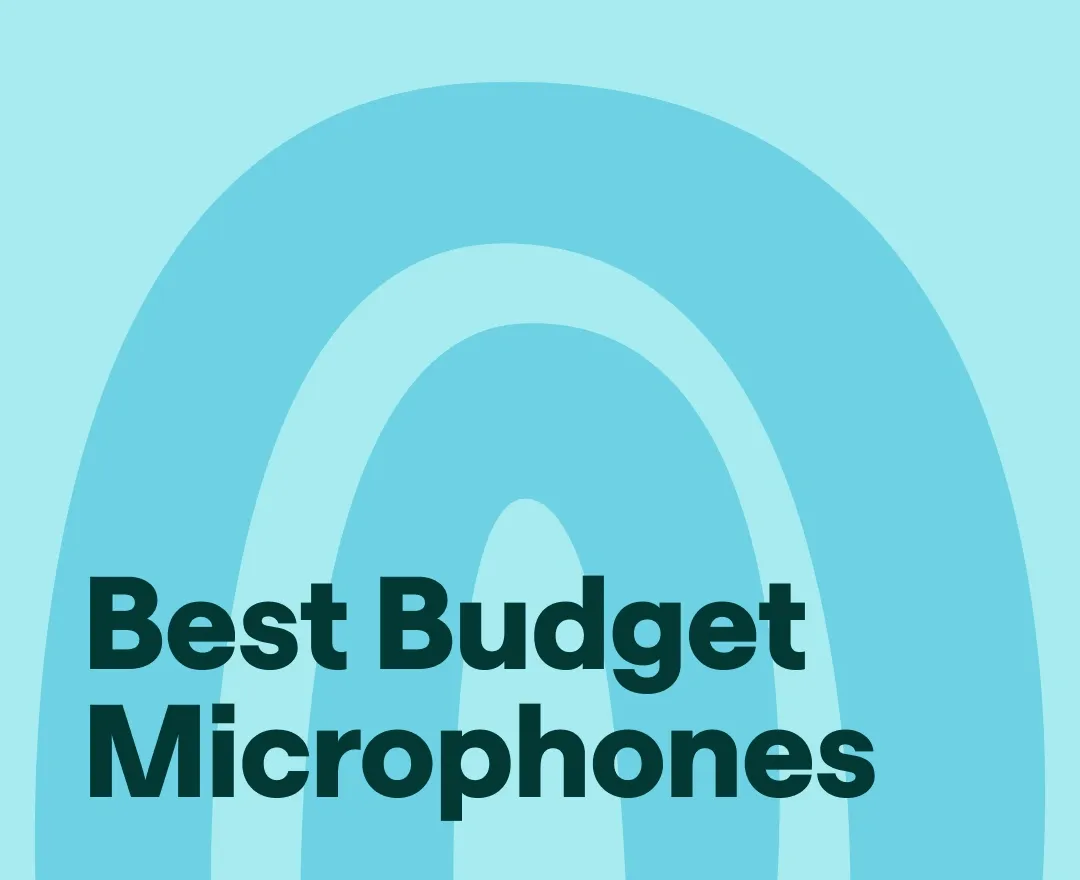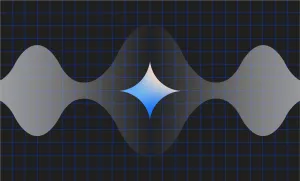Looking to take your podcasting game to the next level without breaking the bank? You've come to the right place!
We all know how important it is to have crystal-clear audio for captivating podcast episodes, and the right microphone can make all the difference. Whether you're a seasoned podcaster or just getting started, we've handpicked budget-friendly options that won't disappoint. Get ready to find the perfect match for your unique voice and create memorable content for your listeners.
Let's dive in and discover your ideal podcasting companion!
Types of microphones
When choosing a podcast microphone there are two things you’ll need to consider: dynamics or condensers, and either XLR or USB connected.
Dynamic vs condenser
Dynamic microphones are great for the outdoors and any environment really. They don’t require any external power and can be plugged straight into any audio interface.
If you’re recording your podcast episode in a studio, go with a condenser mic. These ones do a great job capturing the richness in the voices. If your condenser is also connected via XLR, you’ll also need phantom power. Another downside is that with the richness also comes ambient noise. While you can edit out some of the disruptions with podcast audio editing software, as you can see there are a lot more nuances when it comes to condenser mics.
XLR vs USB
Another thing to consider when choosing your mic is whether it’s XLR or USB.
XLR microphones are a type of professional-grade microphones that use the XLR (eXtended Linearity Range) connector for audio connectivity. Unlike USB microphones, which are more commonly used for simpler recording setups, XLR microphones are widely favored in professional audio applications due to their superior audio quality, reliability, and versatility.
XLR microphones require an audio interface or mixer that provides "phantom power." Phantom power is a low-level DC voltage (usually 48 volts) that is sent through the XLR cable to power the condenser element within the microphone. This condenser element is responsible for capturing the audio signal and producing higher-quality recordings with greater sensitivity and detail, especially in controlled recording environments.
USB mics, on the contrary, aren’t that complicated when it comes to setting them up. You plug them into your laptop, hit record on the podcast recording platform and you’re all set. The simplicity and affordability make these mics a great choice for all kinds of podcasters. That being said, Windows PCs aren't really handling several USB audio source connections that well.
That’s why in more advanced setups and situations we’d suggest going with an XLR connector. While it requires more equipment and knowledge, you have more freedom in the number of microphones you can use.
Luckily, there’s a good-quality podcast microphone for every route you choose!
Best Budget Microphones: Top 10 List for 2025
Below, we’ve put together a carefully curated list of some of the best (and most affordable) models currently on the market. But if you want to cast a wider net, check out our video for a deeper dive into a few more tailored suggestions to make sure you find the perfect match for your needs.
1) Simorr Wave U1
Compact, simple, and reliable. The Simorr Wave U1 is a handy USB mic that’s perfect for creators who want good quality sound without a massive investment. Its cardioid pattern captures what’s in front and drowns out the rest, so you stay heard no matter where you record. No drivers, no complex setups—just plug it in, and you’re good to go. Perfect for the mobile content creator looking for a quick, clear audio solution.
2) Sony ECM-LV1
Ever need a mic that’s there, but barely seen? The Sony ECM-LV1 is a pocket-sized lavalier mic that doesn’t sacrifice quality for size. It’s omnidirectional, meaning it catches sound from every angle, perfect for interviews, vlogs, or capturing real conversations. Plug it into any device with a 3.5mm jack, and you’re ready to record. Small but powerful, it’s like having a professional sound setup in your pocket.
3) Rode VideoMic Me-C
Designed for creators on their phones, the Rode VideoMic Me-C connects straight to USB-C devices, transforming your smartphone into a solid recording setup. With a directional cardioid pickup, it zeroes in on your voice, cutting out background noises when you’re on the go. Compact and ready for anything, this mic’s a must-have for vloggers and streamers wanting quality without the bulk. Pop it on, record, and let the world hear the difference.
4) PoP Voice
Simple, affordable, effective—meet the PoP Voice lavalier. Ideal for newcomers, this mic plugs into phones and cameras via a 3.5mm jack and captures sound in every direction. Interviews, quick vlogs, casual chats—whatever your style, it’s lightweight and easy to clip on. And the sound? Clear and crisp, so you get quality audio without splurging. For beginners looking to step up their sound game, it’s a fantastic choice.
5) JLab Talk
Versatility in one mic. The JLab Talk has multiple pickup patterns—cardioid, omni, stereo—making it easy to switch from solo recordings to roundtable chats. With a 96kHz sample rate, it captures your voice in rich detail, ideal for both podcasting and streaming. Controls are at your fingertips, and the USB setup? Plug and play, keeping your recording sessions smooth. For creators who like flexibility, this mic checks all the boxes.
6) Audio-Technica AT2020
A trusted favorite among creators, the AT2020 is all about giving your voice clarity. This condenser mic captures detail with a cardioid pattern, focusing on what’s in front and blocking out the rest. Whether you’re recording podcasts or vocals, the build is sturdy and the sound quality is rich. It’s a mic you can rely on, especially when you want pro-level sound without the big price tag.
7) MXL 990
Classic look, modern sound. The MXL 990 is a large diaphragm condenser that brings warmth and richness to your voice, making it ideal for spoken word or vocals. Its cardioid pattern keeps unwanted noise at bay, so your recordings stay clean. And that vintage style? A nice bonus for any desk setup. Creators who want that studio feel without the studio price tag will love what the MXL 990 offers.
8) Behringer XM8500
The Behringer XM8500 is a dynamic mic with a cardioid pickup pattern, perfect for isolating your voice while cutting out background noise—ideal for podcasting in busy settings. Built to withstand regular use, it’s a solid choice for creators looking for consistent sound on a budget. Simple to set up, the XM8500 keeps your audio clear and reliable.
9) Shure PGA58
For creators who want dependable vocal clarity without the hefty price tag, the Shure PGA58 is a safe bet. With a cardioid pattern, it picks up the sound you want and drops the background noise. Perfect for podcasting, streaming, or even live performances. This mic’s sleek design and classic Shure quality make it a reliable choice for creators wanting solid audio with minimal setup.
10) SubZero VX01
The SubZero VX01 USB mic is as plug-and-play as it gets. With its cardioid pattern, it hones in on your voice, keeping the focus on your content and not on random background sounds. Simple controls, compact design, and reliable quality make it an ideal pick for new creators looking for clean sound without the clutter of a studio setup.
These are just some of the best podcast microphones—thanks to the growing popularity of audio content there is no scarcity of technology for creating it.
We don’t want you to feel overwhelmed with choices. After all, the content is what your guests will be coming for, so don’t be scared to start out with a cheap podcast microphone while you focus on writing entertaining podcast episodes.
If you’re recording for videos, interviews, or podcasts, consider leveraging AI-powered content creation platforms like Podcastle to bring your audio to the next level. With just a click, Podcastle’s AI assistant enhances your recordings by eliminating background noise, smoothing out silences, and adding a professional polish to your sound. It’s an easy way to elevate quality without needing top-of-the-line gear, so that your voice comes through clearly and consistently every time.
Want to see things in action? Take a look at our AI tools and how they work:








